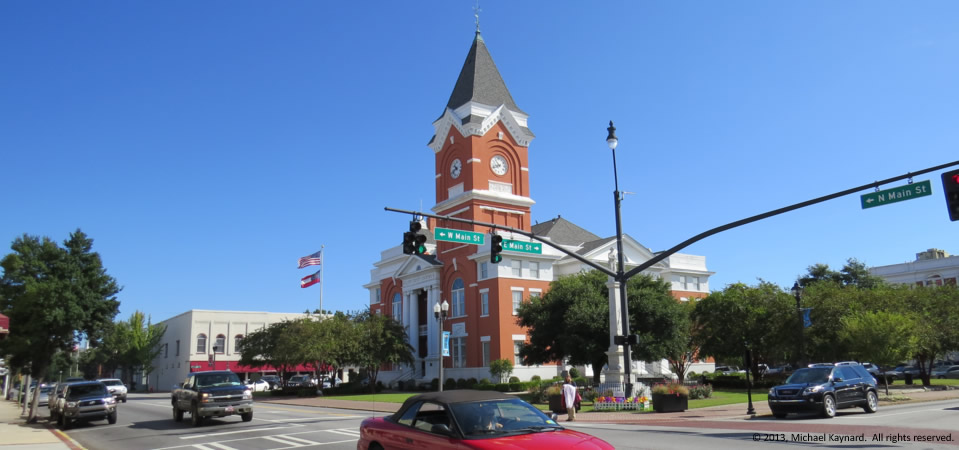
More than 20,000 students attend Georgia Southern University in Statesboro, which is in the middle of the eastern part of the Peach State.
During a visit to the college’s modern campus, there are a lot of modern buildings, such as the College of Education above, as well as hundreds of student apartments that ring the campus.
While poverty isn’t as visible here as in rural farming communities, U.S. Census data show more than 50 percent of Statesboro’s 29,779 people live at or below the federal poverty level. As best as we can figure, the Census must be counting college students, who may make the community look statistically poorer than it is. (Anybody know differently or have a better explanation?)
The community is 54 percent white and 40 percent black. Its median household income is $19,554, according to the Census. If the Bureau is counting college students, the skewed demographics that Statesboro is experiencing can have a dramatic impact because it won’t be able to attract medium- and higher-end stores and shops. In a story told us by a newspaperman during a September visit, we learned that a major grocer won’t move to town because of Statesboro’s relatively low median household income. And that’s a shame because the community seems like it’s got a lot going for it — something the fast-food chains certainly have discovered.
Statesboro is the county seat of Bulloch County, which has 72,694 people (2012), two thirds of which are white. Just over 30 percent of residents live in poverty. The median household income for the county is $33,902.
- Quickfacts on Statesboro and Bulloch County, Ga.
- Wikipedia’s entry on Statesboro and Bulloch County
Photo taken Sept. 23, 2013 by Andy Brack. All rights reserved.










 We stumbled upon the
We stumbled upon the 